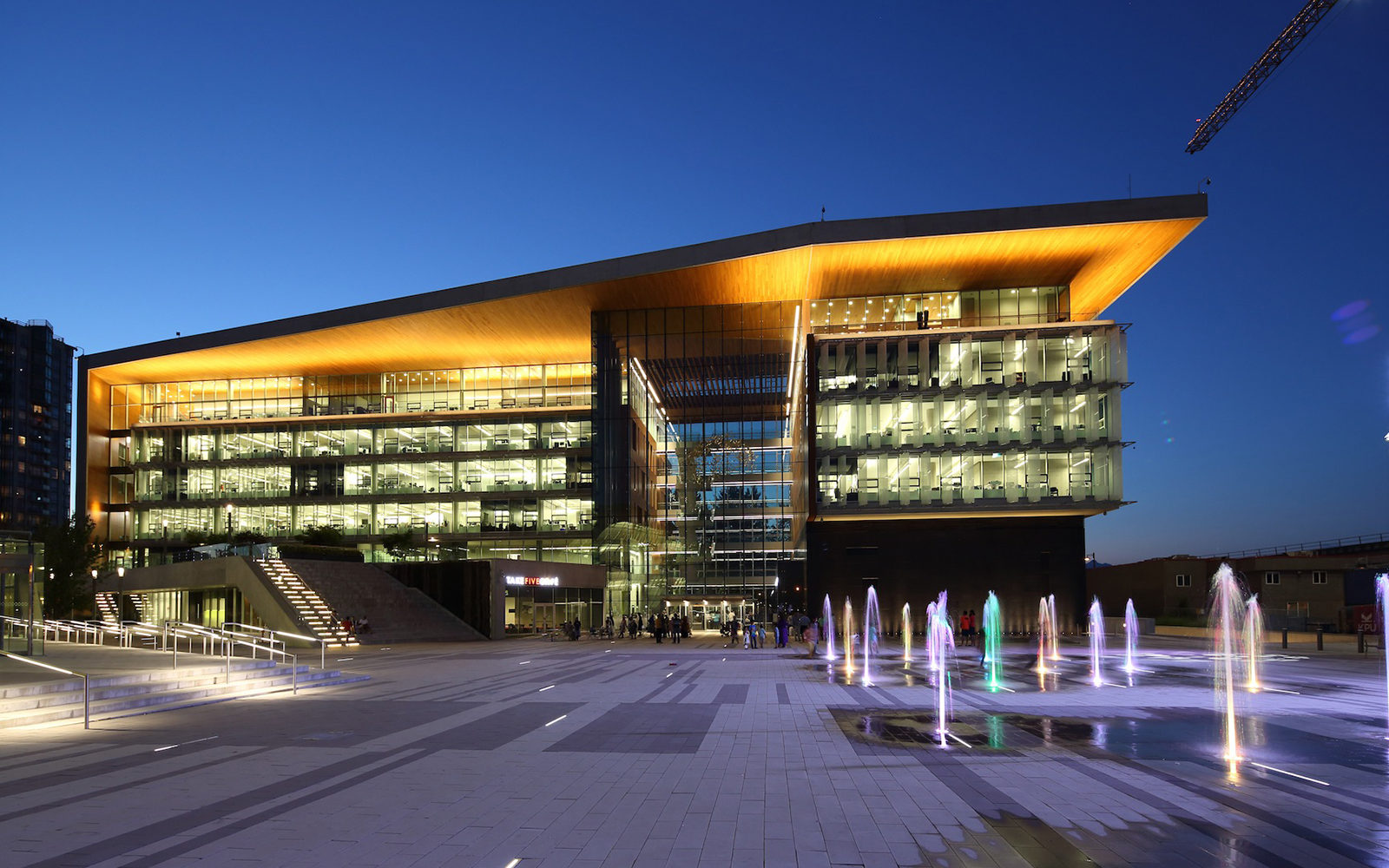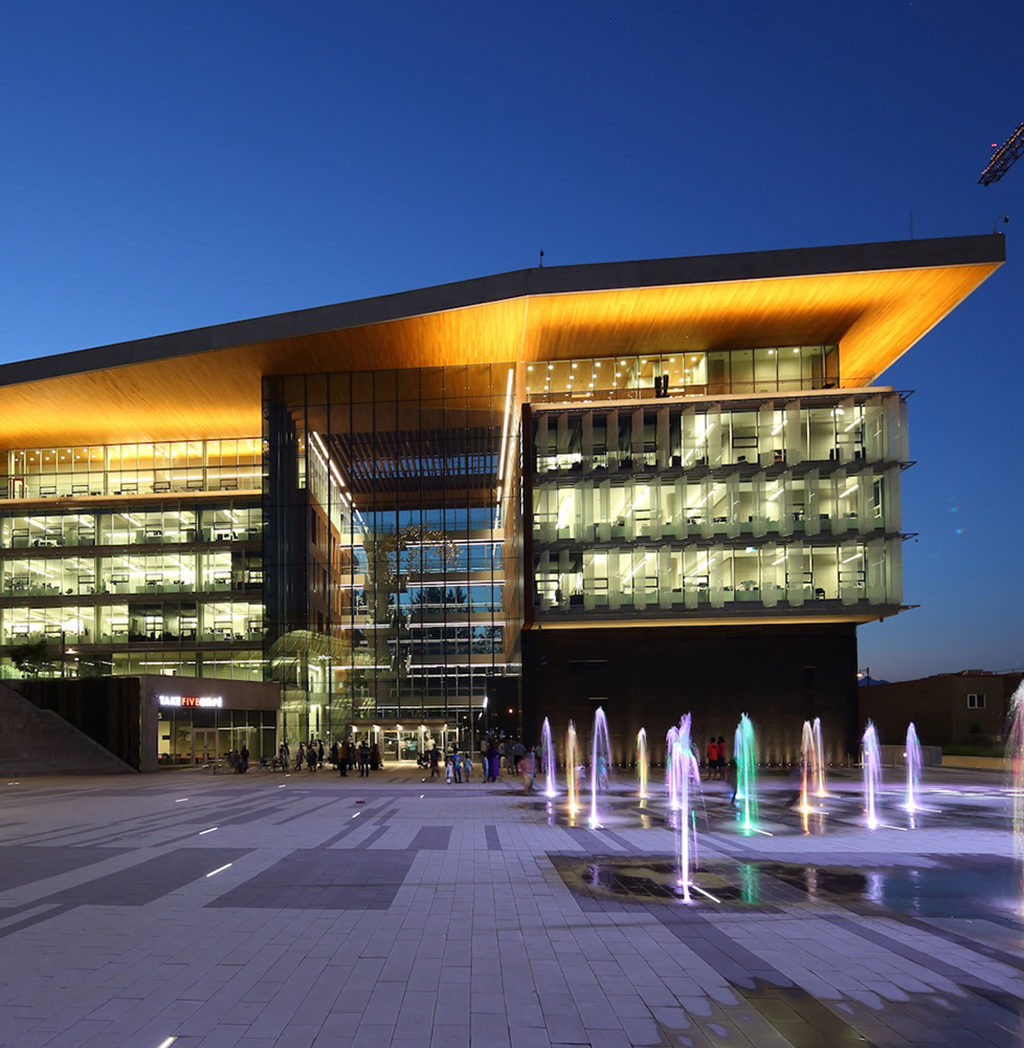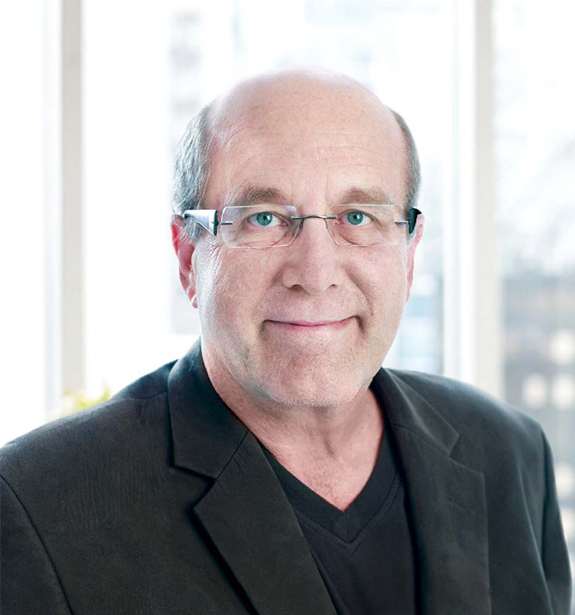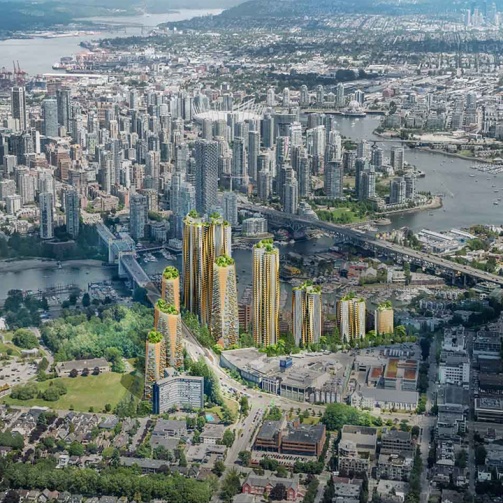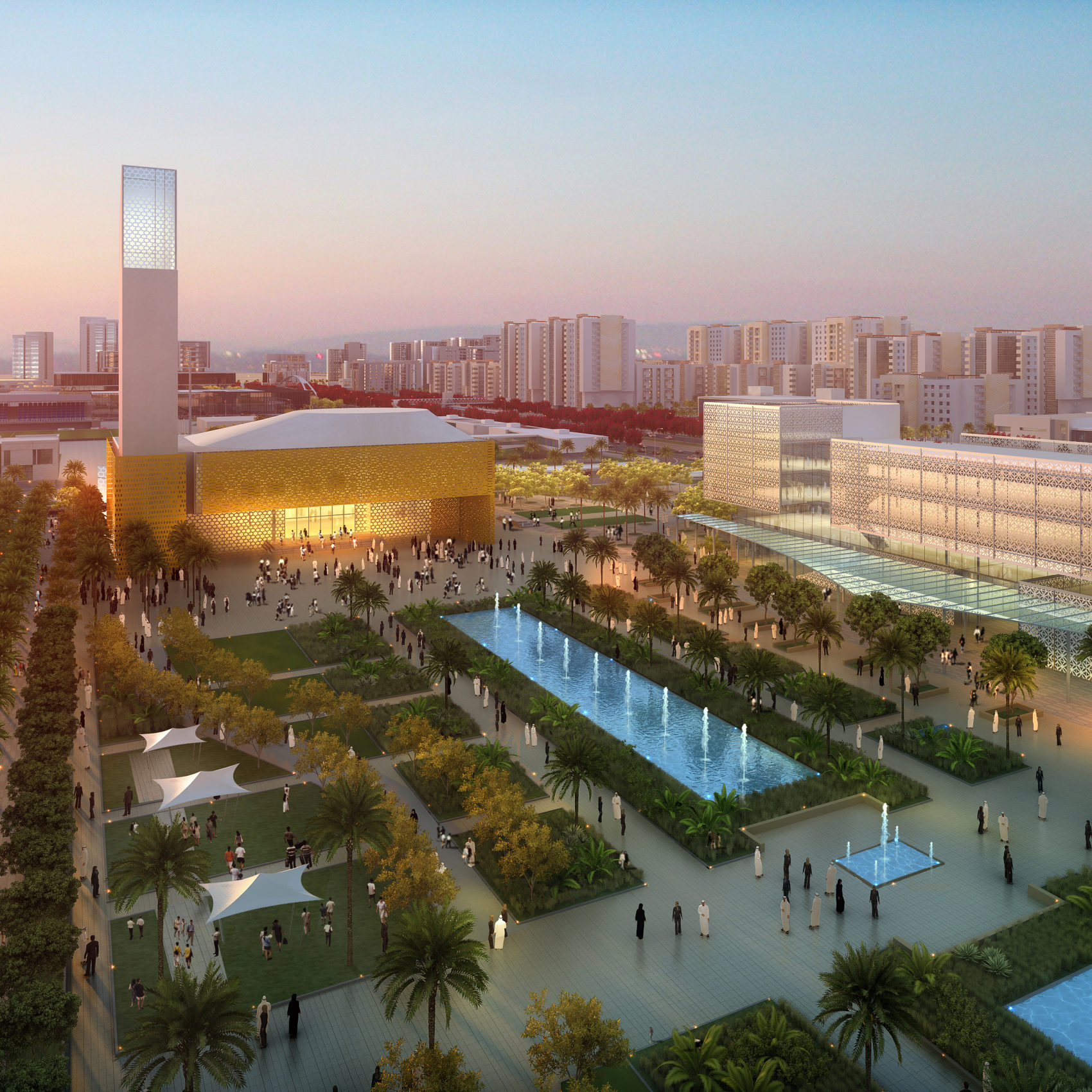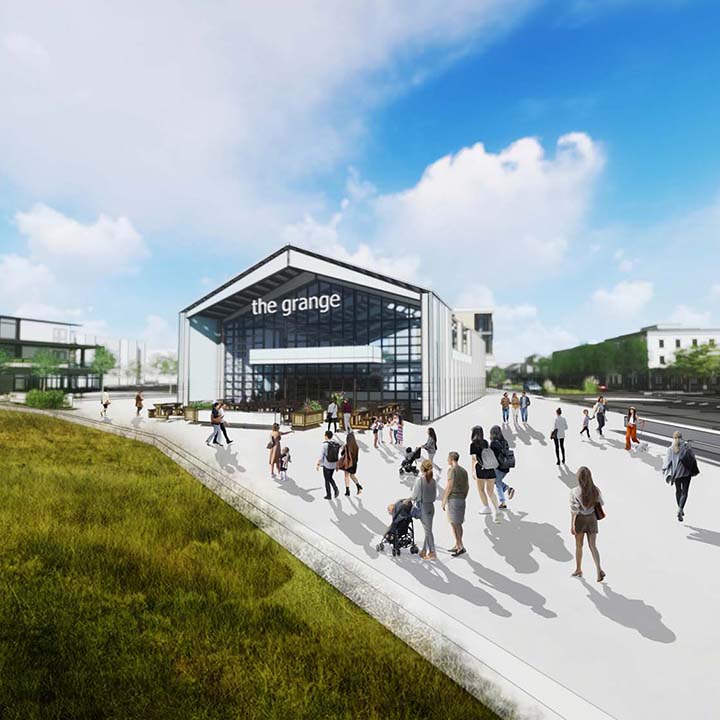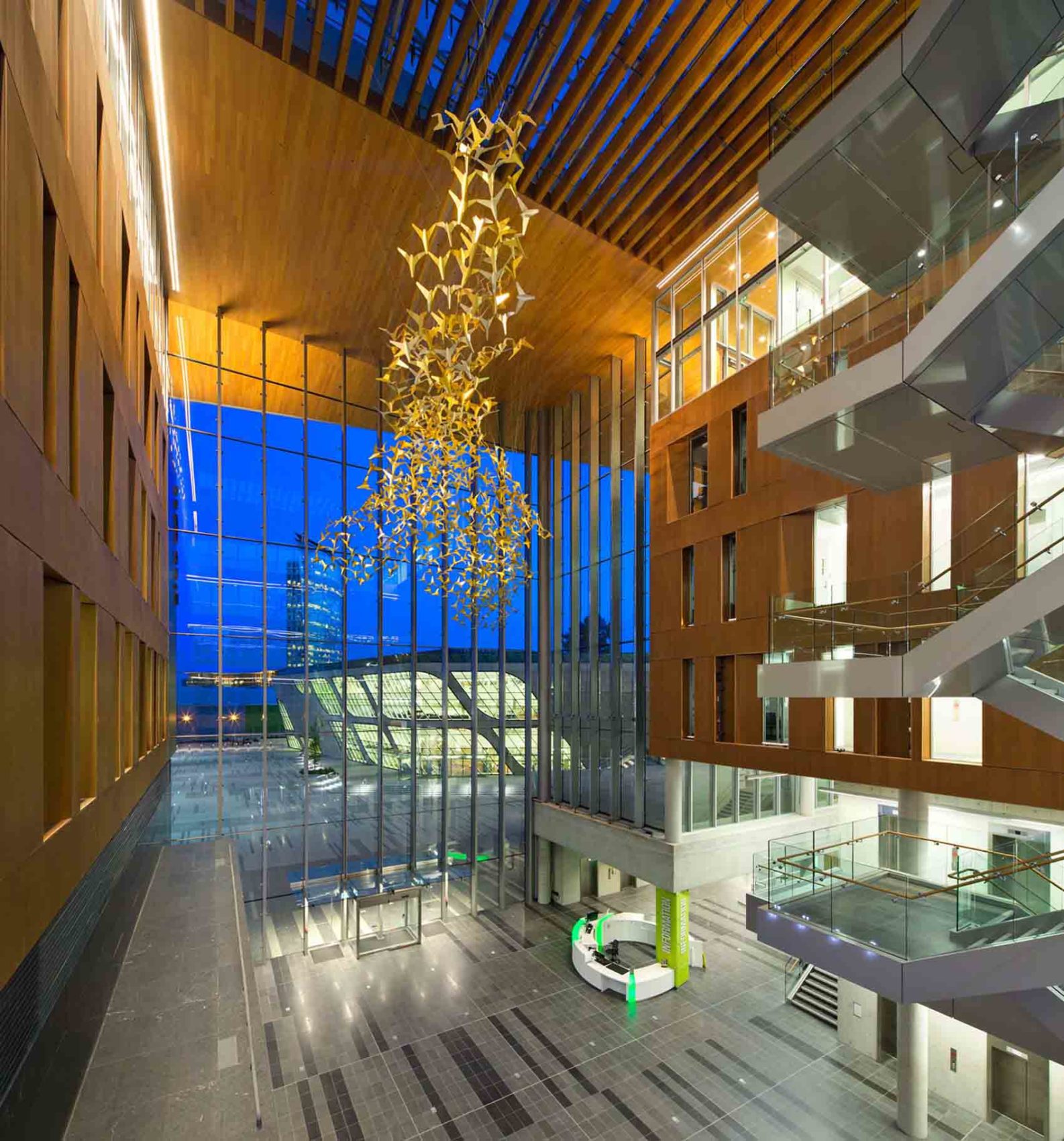
Surrey has a long history of agriculture, cultural diversity, and family-oriented communities, and in recent years, has begun to approach Vancouver in total population size. But, as Surrey’s six townships have slowly grown into one another, the city has lacked a discernible downtown to nurture its collective identity.
Upon initiating an open call for their new civic centre design, Surrey’s municipal government, mayor Dianne Watts, and the Surrey City Development Corporation envisioned a ‘new downtown’: the city hall was to be a key component of a larger master plan that the City hoped would help transform its crime-addled Whalley neighbourhood into a thriving city centre.
Our team partnered with Toronto-based Moriyama & Teshima – design architects with a history of creating dynamic civic buildings – to provide Surrey’s townships with a community-minded gathering place.
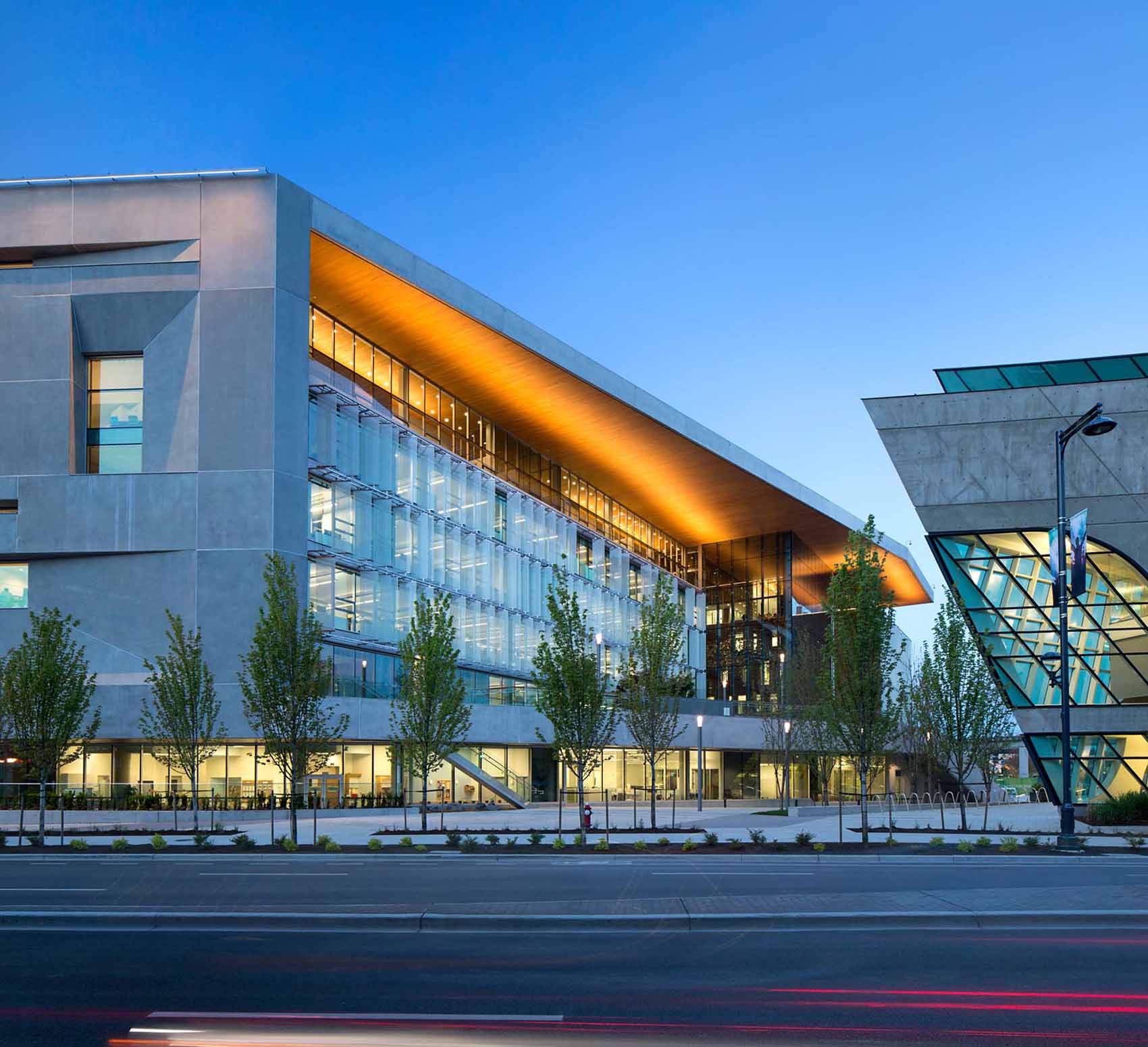
Our partnership’s most creative intervention came at the very beginning of the project. The City of Surrey’s original design brief designated their new downtown to occupy a much smaller site, with the new city hall to join a cluster of buildings comprised of Central City shopping mall and the Simon Fraser University Surrey campus.
Together with Moriyama & Teshima, our team took a step backward and instead asked, ‘What is a downtown?’ Our partnership considered how a contemporary downtown is created by an intricate system of diverse programmatic parts, including civic, residential, retail, and rapid transportation. If Surrey really wanted to define a ‘new downtown’, why not include all of the programmatic components that are required to stimulate downtown activity? And, why not make it pedestrian-centric?
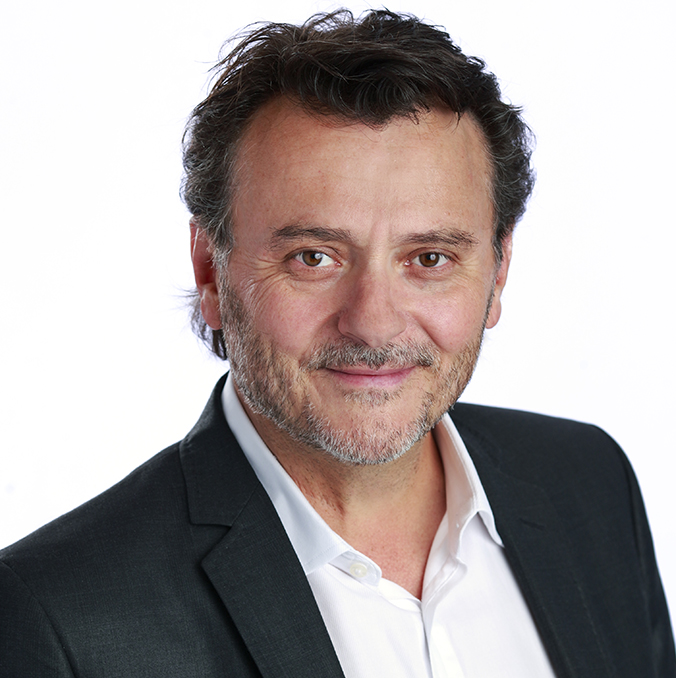
The Surrey Civic Centre project was about city building – the choreography of people, places, nature, business and pleasure as inspiration for joy, happiness, and celebrating urban life. Through collaboration and a shared vision, our approach was to create an identity and catalyst for the sustainable growth of what will soon be British Columbia’s largest population centre.”

Michael McDonald
Principal
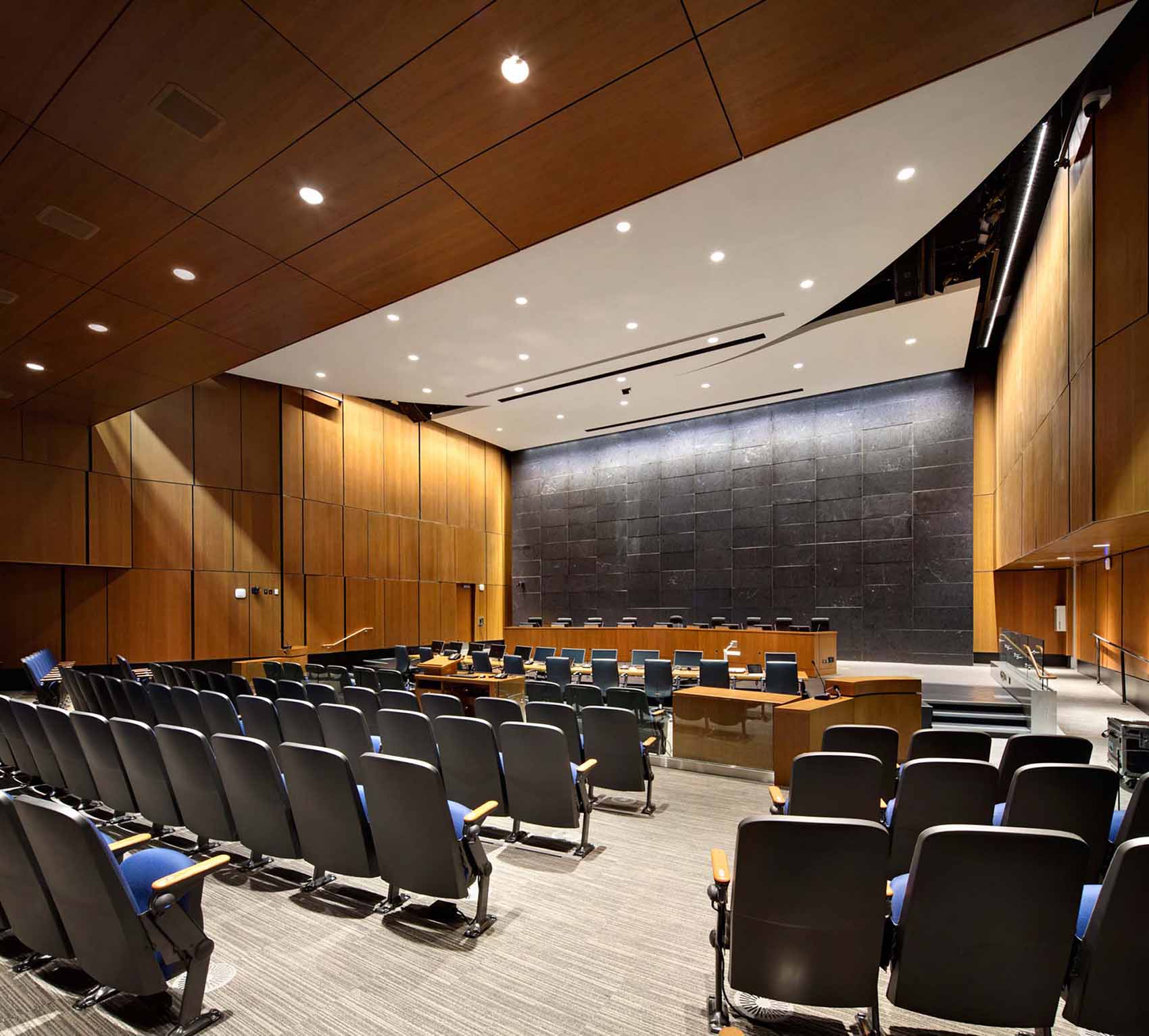
Our partnership’s innovative thinking soon uncovered an exciting approach: instead of clustering all of the master plan’s buildings together, why not elongate the new downtown centre? If the city hall acted as the master plan’s northern anchor, and the Central City mall acted as the southern anchor, the newly-created in-between space could become an activated, pedestrian procession. Then, the resulting, extended perimeter could host other programmatic components to drive ‘downtown’ diversity, such as a new library, commercial and residential development. The City of Surrey immediately saw the potential of the elongated master plan and supported our unique approach to realizing their vision for a green, pedestrian centric downtown.
Our master planning team’s creativity continued during our engagement approach for the new civic centre. With so many different stakeholders involved in the city hall’s design, we facilitated a highly collaborative visioning process to enable every participant to engage and discuss possibilities. Under the philosophy that ‘a picture is worth a thousand words’, the team used hundreds of different precedent photographs as stakeholder conversation points. With sometimes as many as 80 stakeholders in the room at the same time, the images became a stimulus for excited, hands-on participation. Soon, our design team had created a shared visual language with stakeholders — and, just as importantly, we had nurtured a shared enthusiasm for the project.
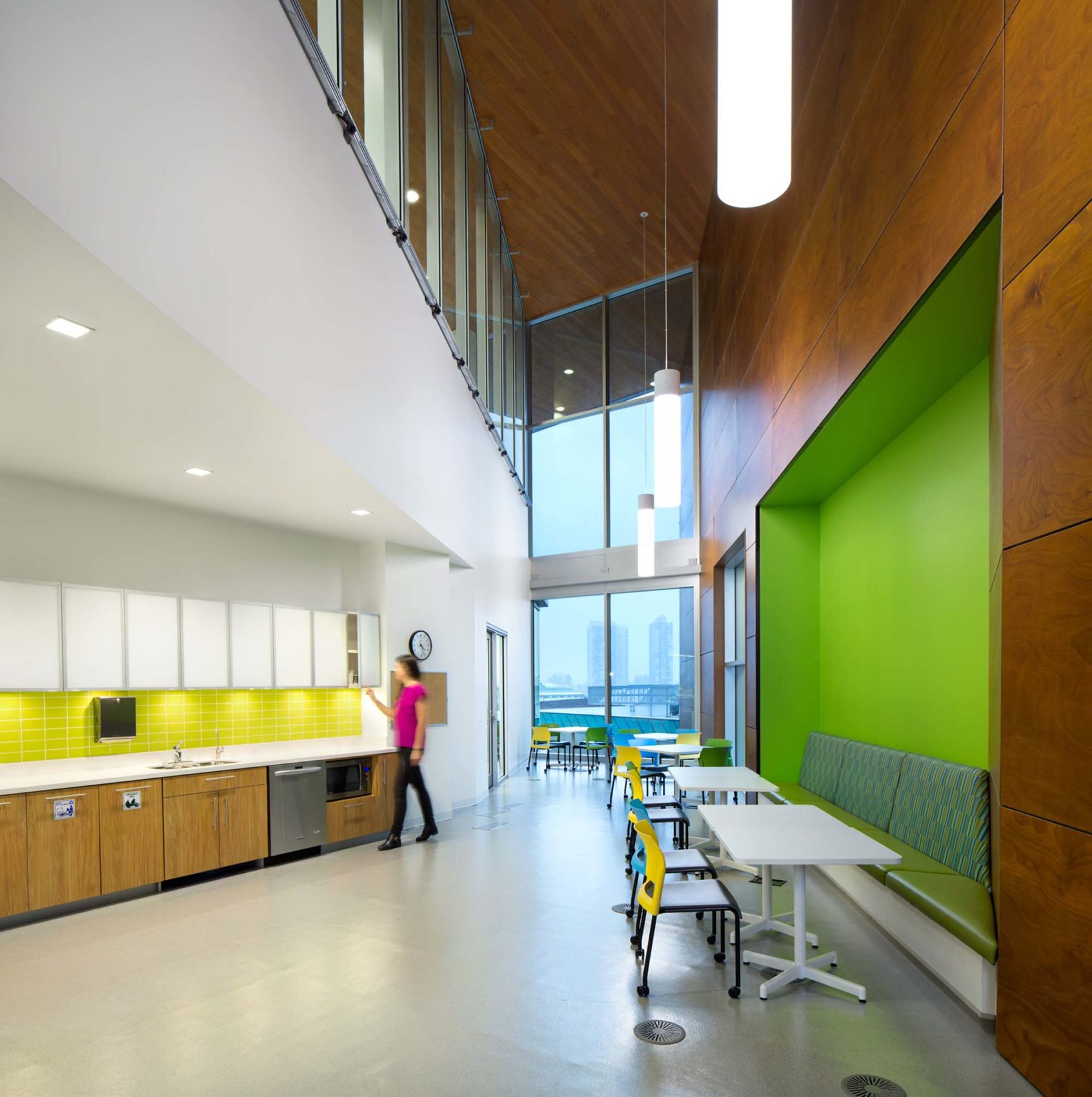
Our team’s goal to create a new downtown that is an identifiable, community-gathering space can be seen in the city hall’s design.
One of the architecture’s formal features is a dramatic roof form that cantilevers over top of the massing below engaging a large public gathering space, designed to be a symbolic, welcoming gesture to the surrounding townships. The front façade is almost entirely glass, designed to encourage a seamless experience between inside and outside, and to create a feeling of municipal, communal openness. Finally, the 800-stalls of underground parking are entirely hidden below ground level. The excavation process to conceal the parking lot required an extraordinary removal of soil, but the result defines a vast pedestrian space that is ideal for community events, celebrations and gatherings of up to 5,000 people.
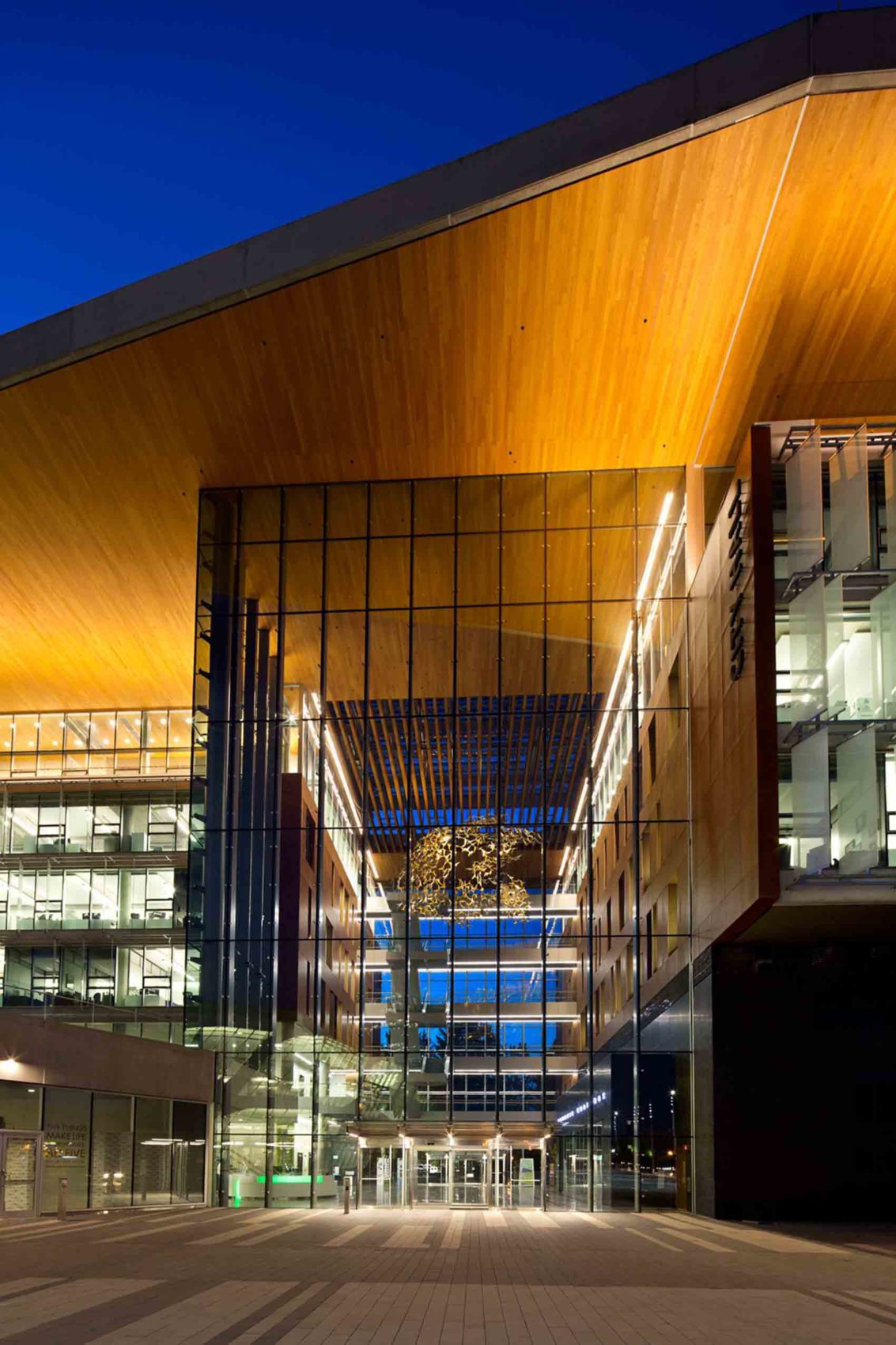
Surrey City Hall & Civic Centre is a significant achievement at both the architecture and master plan scales.
Canadian Architect declared our new city hall to be a success — ‘not just as a piece of architecture, but as a catalyst for the kind of city Surrey wants to be.’ Surrey mayor Dianne Watts lauded our design team for their ‘creativity’, ‘expertise’, and ‘leadership’ in meeting the needs of the municipality.
Meanwhile, the master plan has spurned further development, catalysing the new downtown that the municipal government envisioned. The city has completed a new public library, Simon Fraser University has built a new engineering building, new residential buildings and a new hotel have also been constructed. Dianne Watts estimated that up to ‘$3 billion in private-sector investment’ would ultimately be created, in addition to 43,000 jobs. But perhaps most meaningfully for Surrey’s future, this important subsection of Whalley, a town that has long struggled with crime, has been transformed into a dynamic, flourishing city centre.
EXPLORE MORE
We’d love to get to know you
Get in touch
"*" indicates required fields
Get in touch
Share

